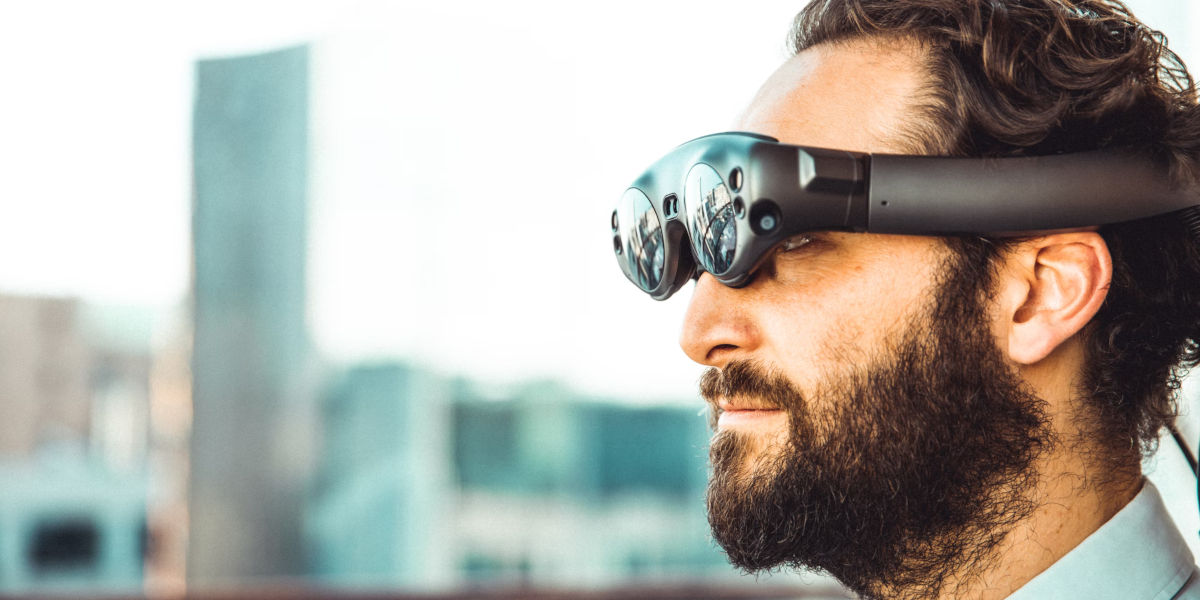If you've spent any amount of time perusing cutting-edge technological news in recent years, chances are you've come across the terms 'Mixed Reality' and 'Augmented Reality'. While these terms might sound like they belong in a sci-fi novel, they're actually very real, very current, and fast reshaping our perception of reality. In this article, we will lift the veil off mixed reality, explaining its fundamental aspects, exploring its practical uses, and draw a comparison between it and its cousin, Augmented Reality. The potential of both these technologies is immense in the quest to alter reality as we know it.
Mixed Reality Explained
So, what is mixed reality (MR)? In essence, mixed reality is the merging (or mixing) of real and virtual worlds to produce new environments where physical and digital objects co-exist and interact in real time. Think of it as a spectrum that encompasses all possible variations and combinations of reality and virtuality. The environments created are not entirely physical, nor are they entirely digital - they're a blend of both.
This blending of realities is achieved through the use of immersive technology, like advanced sensors, optics, and computer components, along with sophisticated software protocols to interpret and combine real-world data with digitally-created content. This symbiosis allows users to manipulate their digital surroundings as if they were real-world elements, providing an unparalleled degree of interactivity and immersion.
Mixed Reality vs Augmented Reality
Augmented Reality (AR) and Mixed Reality (MR) are often confused, mostly because the distinction can be somewhat blurry. Both technologies overlay digital content onto the real world, but they do so in different ways and to different extents. The crux of the difference lies in the level of interaction with the digital elements. In augmented reality, digital elements are overlaid onto the real world, but they can't interact with it. They simply exist as an overlay.
In contrast, mixed reality doesn't just overlay but anchors virtual objects to the real world and allows for interaction with these objects. For instance, in mixed reality, a 3D digital object placed on a physical table would stay put even if you move around the room or interact with it—it behaves as though it's truly present in your room. This major distinguishing factor makes mixed reality a more immersive and interactive experience than augmented reality.
Practical Uses of Mixed Reality
As technology advances, the potential practical uses of mixed reality continue to grow. The unique blend of virtual and real-world elements opens up many opportunities across various fields. Here's a glimpse at some of the practical uses of mixed reality.
Part two of our journey into reality-based technologies takes us in-depth into the world of Mixed Reality (MR). Mixed reality, often called hybrid reality, merges real and virtual worlds to produce new environments and visualizations. In these worlds, the physical and digital objects co-exist and interact in real-time. But how does this technology fare against the increasingly popular Augmented Reality (AR)? Let's dive in and explore!
To comprehend mixed reality better, let's first address the elephant in the room - how does it differ from augmented reality? While on the surface they may seem like similar concepts, deeper exploration reveals distinct differences.
Mixed Reality vs. Augmented Reality
Augmented Reality overlays digital objects onto the real-world environment. The best example of this is the uber-popular smartphone game Pokemon Go, where players catch virtual pokemon in their very real surroundings. However, in an augmented reality, the digital objects and the real world don't interact with each other.
Mixed Reality on the other hand, goes a step beyond. It doesn't just overlay, but also anchors virtual objects to the real world, making it possible for users to interact with digital elements as if they were actually present. Microsoft's HoloLens is a sterling example of such an application, where holographic computing is brought to life. This significant difference between MR and AR is what sets the tech spectrum buzzing.
Practical Uses of Mixed Reality
So now that we have the conceptual differences sorted, we are led to ponder over the practical applications of Mixed Reality. Where does MR fit in our lives and businesses?
The applications of mixed reality are broad and can fundamentally transform how we interact with technology. From healthcare, where MR can help doctors visualize and explore various treatments, to education, where interactive learning could bring about a revolution, the possibilities are seemingly endless.
In industries such as construction and real estate, MR can visualize architectural designs in the actual environment, aiding the decision-making process. In the retail sector, customers could try on clothes or check how the new furniture could look in their living room.
The Future of Mixed Reality
The endless capabilities of Mixed Reality have barely been tapped into, and its future is shrouded with exciting potential. Tech giants like Microsoft, Google, and Apple are heavily investing in MR projects and products, pushing the boundaries of what's possible.
There's plenty to ponder when it comes to MR's potential, but one thing is for sure - it's no longer just the stuff of science fiction. The mixed reality is here, and it's paving an exciting path for the future of technology.




